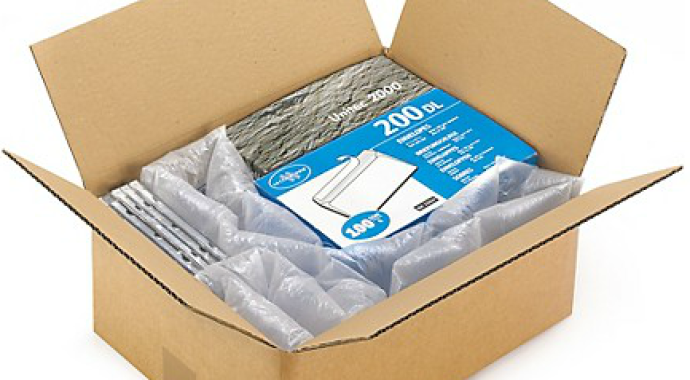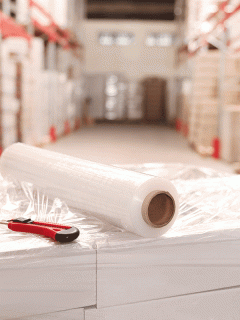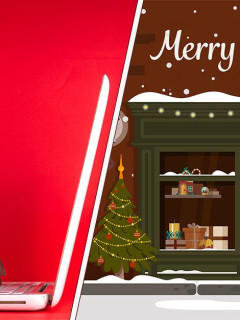Spring is here. The days are longer again, the sun shines brighter and it’s getting warmer. So far so good, but with the shining sun you suddenly see all the dirt that has collected in the corners and on the windows during the dark winter months. Time for spring cleaning!
And it has a long tradition!
History of spring cleaning
The ancient Romans are said to have cleaned out the winter in February, because Februare means to clean.
In Judaism, on Pessah, the first full moon in March or April, the whole home is cleaned in memory of the hasty exodus from Egypt. At that time, everything happened so quickly that there was not even time to leaven the bread. Therefore, even the last crumb of bread is disposed of in the house, because at the time of Passover, Jews are forbidden to eat leavened food (any food made from wheat, oats, rye, barley or spelt). Other cultures also clean in spring. The Chinese, for example, clean to expel the demons of the past year or winter hiding in the dirt and to make way for the good spirits of the new year.
Whatever the cultural or historical background, the custom has been able to survive for so long for quite pragmatic reasons. In past centuries, people used to heat and cook with open fires, and the soot from the fire was deposited on walls, furniture and floors. As soon as the heating period was over, the whole house was turned upside down in spring and cleaned to remove the soot.
This tradition has continued to this day, cleaning the house in spring. With our 8-point plan, the cleaning marathon is guaranteed to succeed.
1. planning and preparation
Spring cleaning needs to be well planned, because depending on the size of the building, it takes a lot of time and you should proceed step by step. Before you start cleaning, think about what needs to be cleaned and what is needed for it. You should have the following basic equipment for spring cleaning:
- Cleaning cloth s – a separate cloth for each room or area of application, for example, sorted by colour: toilet: red, bathroom: yellow, kitchen: green and other surfaces: blue.
- Microfibre cloths for dusting for lint- and dust-free cleaning
- Sponges for stubborn spots
- Wiping cloths or newspaper for cleaning windows
- Hoover, broom and mop or floor cloths for floor cleaning
- Plastic bucket
- Cleaning products:
- All-purpose cleaner suitable for almost all surfaces and floors
- Sanitary and WC cleaner for cleaning toilets
- Scouring milk for stubborn dirt
- Glass cleaner for windows
- Household gloves
- Window wiper for window cleaning and toilet brush for the toilet
2. tidy up thoroughly and proceed systematically
Tidying up should be done before any spring cleaning. It’s the perfect opportunity to get rid of a few superfluous dust catchers and thoroughly clean out or file and organise the accumulated pile of papers on your desk. With coloured bin lin ers, you can also sort the rubbish at the same time. Before cleaning, of course, clear all surfaces that need to be cleaned.
The ah and oh of big cleaning is: proceed systematically. If you simply clean without thinking, you run the risk of soiling rooms that have just been cleaned. Spring cleaning should be done step by step and room by room. The rule of thumb is to clean the kitchen, washrooms, toilets and corridors last, as you will still be using the taps in the washrooms and kitchen when cleaning, and the individual rooms can usually only be reached via the corridor.
3. cleaning start dusting
Dusting is a great way to get started. The dust that is stirred up can then be vacuumed up later. The general rule of thumb when cleaning: always wipe from top to bottom or from back to front. For dusting, a cleaning cloth with microfibre fleece is recommended; it enables dust- and lint-free cleaning. It is best to wipe off the coarse dust dry and then wipe with a damp cloth. When spring cleaning, attention should also be paid to corners that are otherwise ignored, such as the floor under the sofa, radiators, books, light switches, door handles and window handles, because it is precisely here that dust and bacteria collect.
4. vacuum and mop floors
First remove dust and dirt from the floors with a hoover. Before vacuuming, sweep any stairs with the broom from top to bottom. The dirt that ends up at the bottom can then be removed with the vacuum cleaner, and cobwebs in the corners can also be easily removed with a long broom. When spring cleaning, it is recommended that carpets and floor mats are thoroughly beaten outdoors before vacuuming.
After vacuuming, dip a floor cloth or mop in prepared water with floor cleaner and wipe the floors with a damp cloth.
5. clean windows
Always tackle the windows after dusting and vacuuming so that no dust particles stick to the damp surfaces. When cleaning windows, it is important not to clean in direct sunlight, as the water will then evaporate immediately and leave unsightly streaks. So ideally, clean the windows when it is slightly cloudy. Before cleaning the glass, dust the windows and door frames and wipe them with a damp cloth. It is best to have a bucket of clean water ready for cleaning the windows. First wash the window with clear water using a soft sponge or a special wash-up tool. For large windows, it is best to work with telescopic poles. Remove the coarse dirt with the rough surface of the microfibre cloth. Then spray the window with glass cleaner, wipe it with the window wiper and remove and polish the streaks and stripes with the polishing cloth or the smooth surface of the microfibre cloth.
6. clean the kitchen and bathroom
The kitchen and washrooms should also be cleaned out first, sorting out old food and cleaning the cupboards, drawers and shelves. In the kitchen, now is the ideal time to clean the fridge and defrost the freezer overnight, because most bacteria do not die at sub-zero temperatures, they merely go dormant. After defrosting, wipe out with diluted vinegar cleaner.
Remove coarse dirt in the kitchen with scouring milk, but make sure that the surfaces are scratch-resistant. Always use different cloths for the kitchen and bathroom and distinguish between cloths for the toilet and the rest of the surfaces.
For cleaning toilets, rubber gloves should be worn and a special sanitary or toilet cleaner should be used. Soak the toilet bowl with toilet cleaner for at least 5 minutes before scrubbing it with the toilet brush and polish it dry after cleaning, because a warm, moist environment is the ideal place for viruses and germs to multiply. For hygienic reasons, the gloves should be dried upside down after use so that no bacteria can multiply in the warm, moist interior.
In large communal showers, it is advisable to provide a water scraper. Standing puddles of water can be wiped away after each use.
7. clean hallway and entrance
Only at the very end should the floors in hallways and house entrances be cleaned. Before vacuuming the hallway, thoroughly knock out the doormat again. In buildings that are used during cleaning, always remember to put up warning signs on wet floors to prevent accidents.
8. the finishing touches
When all the floors are dry, remember to restock the hygiene items. Fit the rubbish bins in the kitchen and bathroom with the appropriate rubbish bags. Stock the towel dispensers with the appropriate towels and, most importantly, refill the toilet with enough toilet paper. And so that the scent of freshly cleaned rooms doesn’t disappear again straight away – an air freshener works wonders.
Before you sit back in view of the sparkling premises and go for a well-deserved coffee break, don’t forget the cleaning utensils. Wash the used rags and microfibre cloths in the washing machine at at least 60 degrees without fabric softener and either throw the sponges away or heat them in the microwave to kill the germs – but only if they do not contain metal.















